Tuscany is known the world over for its heritage in art, history and culture and one could say that art and culture denote the character of the region.
Places of interest not to be missed are the actual birthplaces of many of the greatest artists, scientists and writers who take pride of place in history: Galileo Galilei, Leonardo da Vinci, Michelangelo Buonarroti, Giotto, Piero della Francesca, Giovanni Boccaccio, Niccolò Machiavelli and many more.
Tuscany’s heritage cities, like Florence, Pisa, Lucca, Siena, Volterra, Fiesole among others, still boast Etruscan and Roman remains, medieval palaces and masterpieces of Renaissance art.
Florence, in its museums, palaces and churches, is home to one of the most magnificent collections of the historical and artistic heritage in the world. An important cultural and academic hub, UNESCO World Heritage Site since 1982 Florence is known the world over as the cradle of art and architecture as well as one of the beautiful cities in the world.
Without a doubt its best known places of art and worship are the Cathedral, dedicated to Santa Maria del Fiore (Duomo), the Baptistery, Giotto’s Bell Tower, Piazza della Signoria, Palazzo Vecchio (“The old palace”), Ponte Vecchio (“The old bridge”), the Uffizi Gallery, the Bargello, the Accademia gallery etc.. Santa Maria Novella and Santa Croce churches are more than just places of worship, but art galleries in the true sense, while the Laurentian Library is an extraordinary example of Michelangelo’s architectural genius.
Strolling through the charming streets of the city centre, walking until reaching the River Arno, crossing the Ponte Vecchio and seeing the “new” part of Florence known as “beyond the Arno river”, Oltrarno, are excellent ways of appreciating the charm and character of the city. Spending the day in the Boboli Gardens or climbing the hill behind Piazzale Michelangelo to reach the Church of San Miniato al Monte give you the chance to enjoy magnificent views of the city.
The city’s emblem since the 11th Century is a red iris on a white background, even though originally the colours were the other way around which actually corresponded to the real colour of the flower Iris florentina.
During the year there are many events tied to popular folklore traditions of which the most important are:
- Cavalcata dei Re Magi (Procession of the 3 Kings, 6th January, an impressive and long procession in historic costume evokes the arrival of the Three Kings in Bethlehem, originating in 1400)
- Capodanno Fiorentino (Florentine New Year, 25th March, the Florentine Year starts at Palazzo Vecchio with a procession in the morning ending up in Piazza SS Annunziata, where Florentines and visitors take part in the festivities)
- Scoppio del Carro (Explosion of the Cart, Easter Sunday, dating back to 1600 if not more, this is one of the city’s most important annual events: an ornate wagon resembling a tower and filled with fireworks is drawn into the square between the Baptistery and the Cathedral by 2 white oxen decorated with garlands of flowers when a rocket in the shape of a dove, known as the “Colombina”, flies from the Cathedral altar and, on striking the cart, sets off a spectacular fireworks display)
- Maggio Musicale Fiorentino (from the end of April until the beginning of July, a Festival since 1933 held in various parts of the City which offers of opera, classical music, dance and ballet and theatrè)
- La Maggiolata – Marzocco Trophy (1st May, the “Calendimaggio” festivity of ancient tradition is celebrated in Florence, “the City of Flowers”, to welcome the arrival of May, the month of flowers with festivities starting on the first day of May but continuing over the whole month. The predominant colours of the month of May in Florence are those of the ancient captivating game of flag throwing, hence the Marzocco Trophy, tournament of flag-waving groups, takes place in the most coveted setting for this historical re-enactment from medieval and Renaissance times, Piazza della Signoria)
- Palio del Baluardo (3rd Sunday in May, a traditional crossbow contest celebrating the historic day, 16 May 1527, when the Florentines rid themselves of the Medici family and declared themselves a Republic)
- Calcio Storico Fiorentino (historic form of football played in historic Florentine costume) and Festa di San Giovanni (24th June, in honour of the patron saint, John the Baptist, is the day of when the finals of this game, invented in Florence in the 16th Century, are played by teams from the 4 ancient quarters of Florence in historic costumes, a mixture of football, rugby and wrestling).
http://www.firenzeturismo.it/it/
http://www.firenzecard.it/index.php?lang=it
Firenze (centre) – 65 km (50 min)
Pisa is probably best known all over the world for its Leaning Tower but, in the old city centre, divided by the River Arno into two large neighbourhoods (Tramontana to the North and Mezzogiorno to the South), narrow medieval lanes and alleys open out into lovely squares and corners that were once the seat of public institutions and centres of trade and commerce.
Piazza del Duomo (Cathedral Square), known better by the poetic name “Piazza dei Miracoli” (Square of Miracles) is the most significant, the artistic and tourist hub of the city. Listed as a World Heritage Site by UNESCO in 1987, here you can marvel at masterpieces of European Romanesque architecture, in other words the monuments that make up the centre of the city’s religious life: the cathedral, the baptistery, the cemetery (campo Santo) and the bell tower.
Piazza dei Cavalieri (Cavalier Square) is worth a visit where Palazzo della Carovana, designed by Giorgio Vasari, including the ornate facade: currently the college Scuola Normale Superiore.
Borgo Stretto and the medieval marketplace are where you can happily walk underneath the medieval arches (Porticoes): along this street which, together with Corso Italia, is the city’s posh place to meet, lies the Romanesque-Gothic San Michele in Borgo church, where building started, as documented, in 990. Markets in the Middle Ages were held non just underneath the arches but also in the little squares nestled in amongst the towers and narrow streets, like Piazza of the Vettovaglie and Sant’Omobono for the fruit market, Piazza Cairoli (known as the Berlina, the pillory), ancient market of the Chavoli and the Gondole, for produce from the nearby Pisan hills, while towards the south Piazza Chiara Gambacorti (or as everyone calls it, Piazza della Pera), once famous for the flower and fish markets.
Local tradition and folklore live on in different events, for example:
- Capodanno Pisano (Pisa New Year, 25th March, the beginning of the Pisa Year starts according to a sort of solar clock, when at midday on 25th March a ray of sun enters the Cathedral and strikes a marble egg)
- Luminara of San Ranieri (16th June, the eve of the patron saint’s day, the city is lit with 70.000 candle-lights, lit straight after sunset and following the architectural profiles of the palaces, churches, towers and the bridges along the River Arno, and in the same way along the walls around the Cathedral Square and the Leaning Tower itself)
- Palio of San Ranieri (17th June, the Patron Saint’s day, the 4 districts of the old city challenge each other in a Regatta on the river Arno rowing upstream, commemorating Pisa’s ancient maritime traditions)
- Game of the Bridge (last Saturday in June, a competition that takes place on the bridge Ponte di Mezzo and has the various neighbourhoods divided into 2 teams, Tramontana and Mezzogiorno, engaging in battle to push a cart towards the “enemy”. The battle follows a procession in costume)
- Sposalizio di Pisa col Mare (marriage ceremony where Pisa marries the sea, 6th July, tradition from Pisa’s Maritime Republic past, where a young maiden, who represents Pisa, rides on a boat as far as the open sea and then throws a gold wedding ring in the sea)
- Historic Regatta of the Ancient Maritime Republics (every 4 years, sporting event and pageant to commemorate the past glory of the 4 Maritime Republics, a rowing competition between the 4 teams from Pisa, Venice, Amalfi and Genoa).
http://www.turismo.pisa.it/it/
Pisa (Tower) – 35 km (40 min)
It is one of the best known art heritage cities in Italy, famous for its historic monuments, like its City Walls still intact since the 15th-16th century, the Guinigi Tower, the Tower of the Hours, the Cathedral of San Martino, the Giglio Theatre, the Amphitheatre square and Napoleon Square.
Its origins date back to the times of the Ligurians and Etruscans but it is only in the 12th century that its power and importance strengthen, subsequently becoming a City-state and then a Republic, maintaining its autonomy as an independent state until the unification of Italy.
Lucca has kept its Roman legacy to this day, like the amphitheatre (the elliptical shape of the square), the forum (currently Piazza San Michele with the Romanesque church of the same name) or, even more evident, the street layout (characteristic of the Roman “castrum” based on roads running north-south and east-west). Owing to the presence of the venerated Volto Santo (Holy Face) in the Cathedral of San Martino, it was an important stop on the Via Francigena, one of the busiest main roads in the Middle Ages.
Due to so many medieval churches of such architectural richness, Lucca was nicknamed the “city of 100 churches” and, thanks to the enormous value of its historic monuments, a proposal has recently been made to include the City Walls in the list of the UNESCO World Heritage Sites.
Noteworthy events in Lucca are the Comics and Games Festival (every year between the end of October and the beginning of November), considered one of the most important festivals worldwide dedicated to the world of comics, cartoons, illustration and games (second in Europe and third in the world) and the Summer Festival (every year in July), a musical event that takes place in Napoleon square with an international cast.
http://www.luccacomicsandgames.com/it/2014/home/
http://www.summer-festival.com/
Lucca – 25 km (20 min)
Siena is one of the most beautiful medieval cities in Italy. Known on a planetary level for its impressive historic and artistic heritage, for its medieval town planning and for the Palio horse race, in 1995 the old city centre was recognized by UNESCO as a World Heritage Site.
Legend has it that Siena was founded by the son of Remus, Senio, hence the presence in the city of so many statues of the mythological Romulus and Remus, breastfed by the wolf. In the old city centre, however, remains of Etruscan civilization have been found which lead one to think the city was founded by them. In the 10th century Siena finds itself at the centre of important trade routes and thanks to that became a very influential city in the Middle Ages.
Siena even has the world’s oldest bank headquarters, the Bank Monte dei Paschi of Siena founded here in 1472.
The cornerstone of the city, since Roman times, is the well-known Piazza del Campo, shell shaped, and where the finals of the Palio horserace are held. The Palio is the most important event of the year for everyone from Siena: a breath-taking bareback (no saddle) horserace between the different neighbourhood districts of Siena that takes place every year on 2nd July and 16th August since 1600.
Piazza del Campo is overlooked by the red Public Palace and by the Mangia Tower which, together with Siena Cathedral, were built during the Governo of the Nove period, the local government run by a mercantile-banking oligarchy, (at the end of the 13th century when Siena reached its zenith economically and artistically speaking). The Palace even in this day and age houses the City Council offices, just like the Palazzo Vecchio in Florence.
Monteriggioni is one of the most significant fortified medieval town, in Tuscany: it still remains incredibly intact, as if time had stopped.
Because of its perfectly circular perimeter, it would seem almost as if it artificially designed whereas it was built following the natural curves of the levels of the ground.
The fortifications of “Mons Regionis”, originally based on a former Longboard farm settlement, date back to 1214, at the wishes of the citizens of Siena, were a defensive measure (to defend their northern border and oppose the expansionist intentions of Florence). Sure enough, the village dominates the underlying area (Via Francigena and Via Cassia) from the top of the hill.
The small urban centre is made up of old houses and of a large central square overlooked by the Pieve of Santa Maria Assunta. The still intact city walls have 14 towers and 2 gates (Porta Franca o Romea towards Roma and Porta Fiorentina towards Florence).
And it is in this dazzling medieval scenario that “In Festa Monteriggioni di torri Si corona” takes place, the Medieval Feast in Monteriggioni (July) which this year (2015) celebrates 25 years, is one of most beautiful and realistic medieval pageants: the village goes back in time, the streets fill with craftsmen and artisans, noblemen, cavaliers, commoners dressed in costume, creating an exciting atmosphere with dancing, music, theatre, shows for children, re-enacting duels, drummers, acrobats, troubadours etc.. A chance to taste the flavour of medieval cooking in the taverns, osterie and open air restaurants, changing €uro with medieval coins to shop with within the walls.
Siena – 130 km (1 h 30 min)
http://www.monteriggioniturismo.it/it/
http://www.monteriggionimedievale.com/it/
Monteriggioni – 114 km (1 h 20 min)
Known in local folklore as the “Castle of the Ship”, for its almond shape which brings to mind a two masted ship, Vinci is the medieval town which gave birth and surname to Leonardo. He was born on 15th April 1452 in the nearby Anchiano hamlet and spent his childhood in Vinci: indeed, the more interesting parts of the town are linked to his genius.
The Castle in Vinci dates back to the Dark Ages and around the year 1000 came into the possession of the Guidi family but, halfway through the 12th century, it came under the dominion of Florence, becoming a city-state.
The original centre of the village is characterized by the Castle of Count Guidi, of which today we can see the ruins of the fortress with the tall central tower, and in the square, behind the Castle, a wooden sculpture reproducing the Vitruvian Man by Leonardo.
A short way away lies the Uzielli Palace which hosts two parts of the Leonardo Museum (the rest continues in the Castle of Count Guidi). Still within the perimeter of the walls of the Castle, the tour finishes with the Church of Santa Croce (where it is thought Leonardo was baptized) and the Leonardo Library (Biblioteca Leonardiana, archive with fac-simile copies of all his drawings and manuscripts).
3 km from the centre of Vinci, taking the old track called the “green road” or “panoramic road”, you will arrive at the house where Leonardo was born, in Anchiano hamlet, a typical rural Tuscan house from the 1400s and that would ideally round off a visit to the museum.
http://www.vinciturismo.it/ita/index.php
http://www.terredelrinascimento.it/vinci.html
http://www.museoleonardiano.it/
Vinci – 30 km (40 min)
Defined as the Green Island of Tuscany, bordered by the Apuan Alps and the Apennines, Garfagnana has had its own history and has maintained its own identity to this day.
Its name, literally, means “Great Forest”: as it appeared to its first visitors, and even today, it takes people by surprise for the extent of its sweet chestnut and beech woods.
Its visiting card, “where time doesn’t pass” rings true and that helps make for a truly relaxing holiday, letting oneself be lulled into a slower pace of life.
Villages and hamlets come into sight, almost by surprise, nestled at the top of a hill or spread over a plateau or even on a rocky cliff.
- Barga – 12th/13th century hilltop town, listed as one of the “most beautiful villages in Italy”, and chosen by the poet Giovanni Pascoli as his adopted town. In the old city centre stands the Theatre “dei Differenti” where the poet made his famous speech “La Grande Proletaria s’è mossa” and Pascoli’s house now a museum can be visited at Castelvecchio Pascoli on the Caproni hillock.
- Borgo a Mozzano – medieval village situated at the mouth of the valley of the River Serchio. A settlement at the time of the Ligurians, Etruscans and Romans. Some of its churches go back to the Longboard era and Carolingian period, later destroyed and rebuilt in the 11th-12th The ancient Via Clodia (Roman road that runs along the river Serchio and crosses Garfagnana, linking Lucca to Luni) passes through the area: the road goes through the village of Diecimo (where the Via Francigena also passes) and then Borgo a Mozzano. The symbol of village is the Maddalena Bridge (a feat of Medieval engineering in the 14th century, presumably constructed on the foundations laid in the 11th century, as originally planned by Countess Matilde of Canossa), better known as the Devil’s Bridge, due to the local legend that gives the devil credit for building the bridge.
- Castiglione di Garfagnana – the small county town dates back to the Roman period (it was a castrum, fortified camp) and Castrum Leonis (Castiglione) was the most significant stronghold in the valley. It became, in time, a fortress and the castle was the most important in the Republic of Lucca, defending its border with the Duchy of Modena. Recognized as one of the “most beautiful villages in Italy”, the town is so attached to its traditions that they have never been forgotten. It offers a scenery of great charm, the walled citadel, a stronghold with towers and the Drawbridge Gate (or New Gate).
- Castelnuovo di Garfagnana – set at the confluence of the rivers Serchio and Turrite Secca. The first historical information we have goes back to the Longboard era but only by 1300 had it become a prominent intersection of trade routes (the “southern gate” to the Garfagnana Valley). Choosing to put themselves under the rule of the Estensi family from Ferrara in 1430, Castelnuovo then became the county town for the whole area. The city is divided into quite distinct neighbourhoods, called “rioni”, where the oldest parts were built around the walls. The city emblem is the Ariosto Fortress where the poet Ariosto resided in the role of governor of the provinces of Garfagnana for the Estensi family.
- Coreglia Antelminelli – since the year 1000 it had an important role in the Serchio Valley, like “a place you had to go through”. Listed among the “most beautiful villages of Italy”, it is best known as the home of the Figurinai (travelling craftsmen who made small figures out of chalk, a typical handicraft in the Serchio Valley). In the village today, one can visit the Chalk Figure and Emigration Museum, dedicated to the local community.
http://www.borghitalia.it/pg.base.php?id=5&lang=it&cod_borgo=196
Barga – 50 km (1 h 10 min)
https://sites.google.com/site/prolocoborgoamozzano/
http://www.halloweencelebration.it/
Borgo a Mozzano – 34 km (40 min)
http://www.castiglionegarfagnana.info/
http://www.borghitalia.it/pg.base.php?id=5&cod_borgo=703
Castiglione di Garfagnana – 65 km (1 h 10 min)
http://www.castelnuovogarfagnana.org/
http://www.turismo.garfagnana.eu/it/visitare/Castelnuovo-di-Garfagnana.html
Castelnuovo di Garfagnana – 60 km (1 h 05 min)
http://www.turismo.intoscana.it/site/it/localita/Coreglia-Antelminelli/
http://www.borghitalia.it/pg.base.php?id=5&lang=it&cod_borgo=336
Coreglia Antelminelli – 50 km (1 h 20 min)
| Leave from | Altopascio – San Jacopo Church |
| Arrive at | San Miniato – Convent of San Francesco |
| Total distance | 29 km |
| Practicability | On foot or by Mountain Bike or on horseback |
| Cyclability | 100% |
| Total time (by foot) | 5 h 40 min |
| Difference uphill | 283 m |
| Difference downhill | 173 m |
| Max Quota | 130 m |
| Difficulty | Easy |
| Paved roads | 44% |
| Unpaved roads / Tracks | 53% |
| Mule track & paths | 3% |
| How to arrive at the starting point | Train line Florence-Viareggio, Station of Altopascio |
The first part of the leg (at Galleno) is characterized by the magnificent cobblestones that were laid for the Via Francigena at the time.
After the part with the uninhabited barren Cerbaie hills, the next destination is Ponte a Cappiano with the recently restored ancient Medici bridge, in which they built a hostelry.
From Ponte a Cappiano, along the embankment of the Usciana canal, passing a former swamp, now reclaimed, and climbing again towards the old city centre of Fucecchio.
Having crossed the river Arno, following the riverbank it will not take long to arrive at San Miniato, prominent and wealthy medieval town, still today perfectly preserved.
Refreshment can be found at Villa Campanile, Chimenti, Galleno, Ponte a Cappiano and Fucecchio.
http://www.viefrancigene.org/it/
Galleno – 3 km (05 min)
Set between Massaciuccoli Lake and the Tyrrhenian Sea, between the Apuan Alps and the Natural Reserve of Migliarino-San Rossore-Massaciuccoli, Torre del Lago Puccini is still today a popular holiday destination.
Its name come from a tower that in the 15th and 16th century overlooked the lake (Massaciuccoli); then, in 1938 the name of Puccini was added in honour of the composer, who wrote some of his most famous operas while living at Torre del Lago.
On the shores of the lake, a stone’s throw from Giacomo Puccini’s villa, an open air theatre (Theatre of the 4000) hosts, every summer since 1930, an opera season called “Festival Pucciniano”, with performances of operas by Puccini.
http://www.puccinifestival.it/
Torre del Lago Puccini – 48 km (39 min)
The Theatre of Silence is a natural amphitheatre, making use of the bowl created by the hills surrounding Lajatico (Pisa). Inaugurated in July 2006, it was built at the behest of the popular tenor Andrea Bocelli, Lajatico born and bred.
The original idea planned a structure (seating and stage), that could be easily erected just once a year for the annual Concert (hence the name Theatre of Silence), and afterwards, taken down leaving the hills in their natural state while the stage becomes an artificial lake.
http://www.teatrodelsilenzio.it/
http://www.lajatico.info/TeatrodelSilenzio.htm
Lajatico – 45 km (54 min)
Tuscany, a land where culture and the immeasurable art and history heritage play the leading roles, is like a “an open air museum”. As a matter of fact UNESCO has, in the course of the years, listed 7 Tuscan locations as UNESCO World Heritage Sites:
- Florence – Old City Centre (1982)
- Pisa – Piazza del Duomo (1987)
- San Gimignano – Old City Centre (1990)
- Siena – Old City Centre (1995)
- Pienza – Old City Centre (1996)
- Orcia Valley (2004)
- Medici Villas and Gardens (2013)
San Gimignano is a small fortified medieval town, halfway between Florence and Siena, famous for its architecture and its stunning medieval towers that make such an exceptional skyline, some still standing since 1200. It truly is one of the best examples in Europe of urban planning at the time of the City-states. Built on a hilltop 300 metres above sea level, it is a real vantage point over the surrounding valley of the river Elsa, the first settlements date back to the Etruscan period.
San Gimignano flourished most in the Middle Ages, due also to the fact that it was on the Via Francigena; the city was an important reference point for the many sellers, wayfarers and above all, for the countless pilgrims making a pilgrimage to Rome and in search of hospitality and assistance.
Wealthy families in the town would build a tall tower as a symbol of their power and prosperity and of the 72 towers only 14 are still standing, which to this day San Gimignano owes its charm and skyline.
It is also one of the little agricultural gems of the province of Siena for its Vernaccia wine production and saffron cultivation.
Pienza is a small medieval town in the Orcia Valley, the most important in the area artistically speaking, not far from the Via Cassia. In a very strategic position, nestled on a hilltop overlooking the whole valley below with a breath-taking view.
It was known as the “ideal” city of the Renaissance, the creation of the great humanist Enea Silvio Piccolomini, who later became Pope Pio II°: having sufficient money and power to be able to completely rebuild the village where he was born, Corsignano, turning it into what he regarded as a Utopian city, embodying the principles and philosophy of the Classical Age and of the great Italian Renaissance.
Pienza, however, is also the city of the “cacio” (cheese), pecorino of Pienza, that is: a savoury cheese made from sheep’s milk. Every year in early September, the “cacio” is the star of a festival dedicated to it, Fiera del Cacio, including an amusing contest called Palio del Cacio Fuso, where players from every district of the town have to roll a whole Cacio cheese around a wooden spindle (fuso) in the centre of the main square named after Piccolomini (Piazza Pio II°).
The Orcia Valley winds its way through the provinces of Siena and Grosseto and today, the entire area is a protected area, the Artistic Natural and Cultural Park, where nature still reigns pure as ever, changing colour continuously, according to the season’s dictates. The terrain is slightly hilly, craggy and dark Sienna colour, like the pigment and known as “terre of Siena” or “crete senesi”.
The distinguishing tree is the cypress; the most typical food the pici pasta, pecorino from Pienza and the ham and sausages made from Cinta Senese (breed of pig from Siena); typical local wines are Brunello of Montalcino and Vino Nobile of Montepulciano.
The beautiful countryside of the Orcia Valley has been the inspiration for many Renaissance painters and scattered everywhere are hamlets and villages, castles, abbeys, each of them with its own incredible tale to tell: Castiglione d’Orcia, San Quirico d’Orcia, Ripa d’Orcia, Abbadia S. Salvatore, Monticchiello, Sant’Antimo, Montalcino, Montepulciano, Pienza, Chianciano Terme, Bagno Vignoni, Radicofani etc..
The 12 Medici Villas and 2 Medici Gardens, symbol of the “Lords of Florence” were the last Tuscan sites recognized as UNESCO World Heritage sites in 2013 and are as follows: the Boboli Gardens (already UNESCO World Heritage site together with Florence city centre), Villa Medicea La Petraia, Villa Medicea of Castello, Villa Medicea of Careggi, Villa Medicea of Poggio Imperiale, Villa Medici at Fiesole, Villa Medicea in Cerreto Guidi, the Garden of Pratolino (Francesco I°’s villa was knocked down by the House of Lorraine), Villa Medicea in Cafaggiolo, the Castello del Trebbio, Villa Medicea at Poggio a Caiano, Villa Medicea of Seravezza, Villa Medicea La Magia at Quarrata and Villa Medicea of Artimino.
The Medici villas are rural building complexes owned by members of the Medici family between the 15th century and the 17th century around Florence and in Tuscany.
When the Medici family were in residence, the villa would become a microcosm of the Medici court. Replacing old castles as residences, the Villas were extraordinary examples of Renaissance and Baroque architecture, including gardens, an evolution of style and quite different from typical Tuscan country houses.
These villas and gardens represent an excellent example of a new style of country house (villa with garden) and a new aristocratic lifestyle, launched by the Medici in Tuscany during the Renaissance and then spread across Europe, based on a harmonious relationship between architecture and the surrounding natural setting.
San Gimignano – 65 km (1 h 15 min)
Pienza – 175 km (1 h 55 min)
http://www.parcodellavaldorcia.com/indexb.asp
http://www.terresiena.it/it/val-d-orcia
Val d’Orcia – 140 km (2 h 15 min)
http://www.regione.toscana.it/ville-e-giardini-medicei
Villa Medicea di Cerreto Guidi – 24 km (35 min)



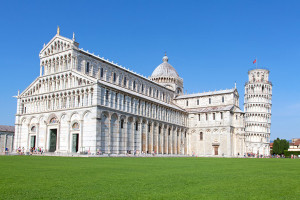
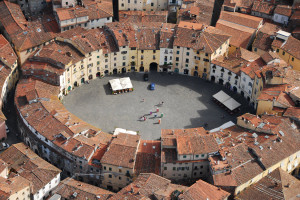

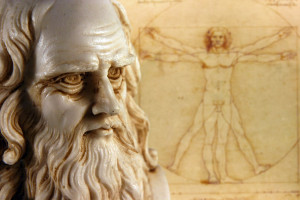
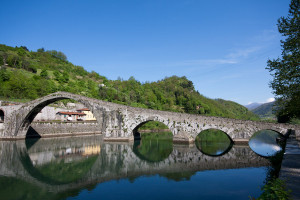
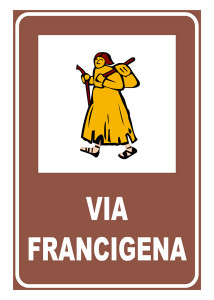
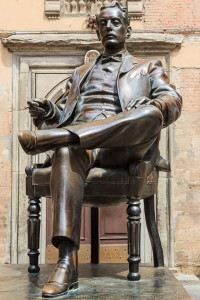
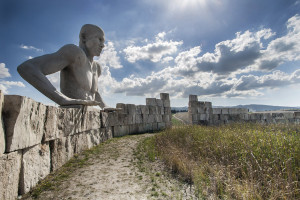
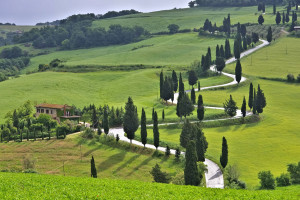
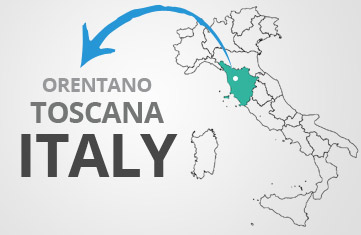 Villa Colombai
Villa Colombai